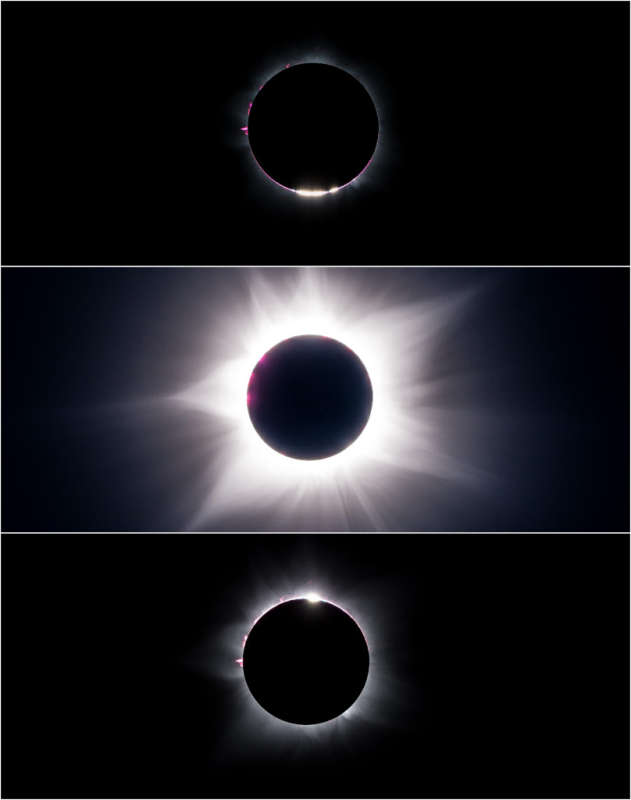Credit & Copyright: Gwenaцl Blanck
Explanation:
Along
a narrow path
that mostly avoided landfall,
the shadow of the New Moon raced across planet Earth's
southern hemisphere
on April 20 to create a rare
annular-total or
hybrid solar eclipse.
A mere 62 seconds of totality could be seen though,
when the dark central lunar shadow just grazed the
North West Cape, a peninsula in western Australia.
From top to bottom these panels capture the beginning, middle, and
end of that fleeting
total eclipse phase.
At start and finish, solar prominences and beads of sunlight
stream past the lunar limb.
At mid-eclipse the
central frame reveals
the sight only
easily visible during totality and most
treasured by eclipse chasers, the
magnificent corona
of the active Sun.
Of course eclipses
tend to come in pairs.
On May 5, the next Full Moon
will just miss the dark inner part of Earth's shadow
in a penumbral lunar eclipse.
1999 2000 2001 2002 2003 2004 2005 2006 2007 2008 2009 2010 2011 2012 2013 2014 2015 2016 2017 2018 2019 2020 2021 2022 2023 2024 2025 |
Январь Февраль Март Апрель Май Июнь Июль Август Сентябрь Октябрь Ноябрь Декабрь |
NASA Web Site Statements, Warnings, and Disclaimers
NASA Official: Jay Norris. Specific rights apply.
A service of: LHEA at NASA / GSFC
& Michigan Tech. U.
|
Публикации с ключевыми словами:
solar eclipse - Солнечное затмение
Публикации со словами: solar eclipse - Солнечное затмение | |
См. также:
Все публикации на ту же тему >> | |
